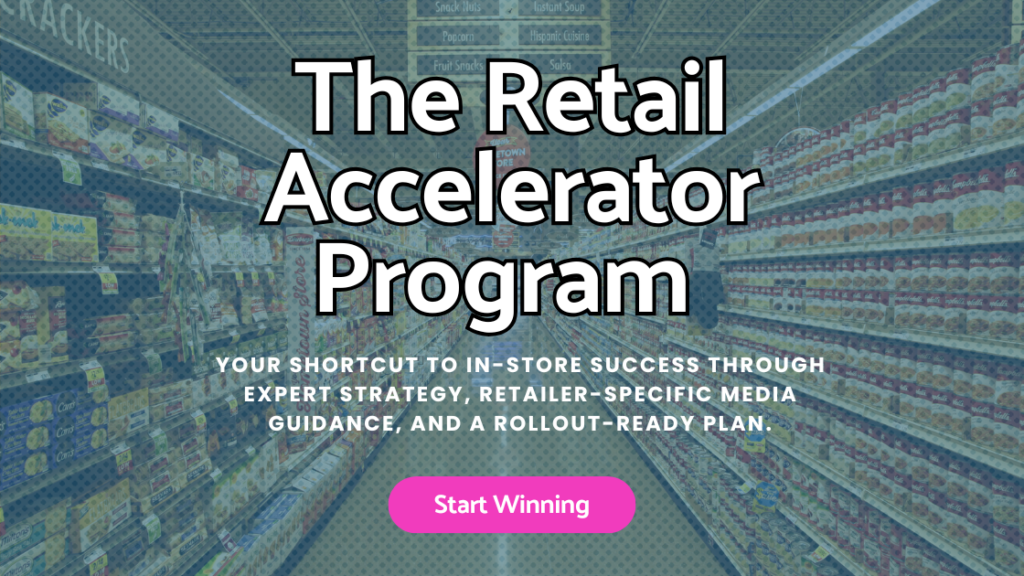There’s a really good chance you have a treasure trove of insights to propel your sales, and it’s right in front of you! So, the question is this: Are you on top of your customer data collection and regularly looking at these trends?
If not, you could be missing exceptional data points that explain how to make your sales and marketing efforts succeed. If you want to reach people who will actually buy your products or services, collecting the right facts and intelligence around your existing audience will also help you create a unique and positive customer experience for everyone your brand wants to impress in the future.
Let’s look at Cliffedge Marketing’s guide to data collection and management strategies so that you’re in the loop.
What Is Customer Data?
First, let’s define what analysis we’re collecting. Customer data refers to various forms of information about your shoppers. Some data you collect will come directly from those customers, such as addresses or phone numbers. Other data stems from someone filling out a survey, buying a product or clicking on an ad.
What are some examples of customer data in use?
- Someone makes a purchase from you.
- Someone provides you with their email address, phone number or home address.
- Someone accepts or declines your retail promotion surrounding a new product.
You can use any customer data provided to develop personalized experiences, which is why so many companies curate specific profiles for their audience. These data-rich profiles allow you to connect in different ways.
For example, knowing your shoppers’ preferences and purchase history allows you to send them a purchase recommendation based on their previous transactions. Online book retailers are a good example of this–the “You May Also Like…” suggestions. Tracking online patterns and e-commerce habits helps retailers create these customized options, and it all comes down to data.
6 Types of Customer Data and How to Turn it Into Sales
There are several types of customer data that brands can use based on the type of information and how your business obtains it. Here are the six types of shopper data (with examples) that we pay attention to when crafting a retail marketing strategy:
#1 Personal Data
A particular person’s personal information makes them unique, such as:
- Age
- Ethnicity
- Occupation
- Income
- Marital status
This type of shopper data helps companies create basic customer profiles, noting patterns and behaviors among different demographics.
For example, a brand specializing in baby products would be particularly interested in the age and marital status of its customers to better understand their target market. Similarly, a luxury food item manufacturer might focus on income levels to identify their primary consumer base.
#2 Behavioral Data
Behavioral data takes a close look at how shoppers interact with a particular brand. Assessing purchase history is a great example of collecting behavioral data, but it looks at so much more than what the customer buys. Using purchase history for behavioral data collection considers every aspect of the purchase.
- Was it their first purchase with you?
- Was it a full-price purchase or during a sale?
Questions like these create a detailed picture of your buyer’s purchasing habits so that your business can find new ways to encourage further interactions.
In the context of the CPG world, behavioral data involves understanding how customers interact with products. For instance, does a customer regularly purchase organic snacks or only buy them during sales? Analyzing shopping patterns during different times of the year (e.g., holiday seasons) can also provide insights into purchasing habits, enabling the brand to tailor marketing strategies and stock levels accordingly.
#3 Preferential Data
Preferential data is similar to behavioral analysis but goes much deeper into comparing products. Does this customer lean more toward a certain brand? Do they have specific preferences, like organic products?
Noting different preferences helps you create very precise recommendations for products they may like. For example, a snack brand may use preferential data to understand a customer’s inclination towards certain types of products, like gluten-free, organic or locally sourced items.
#4 Engagement Data
Engagement data examines how visitors interact with virtual content, such as:
- The products they view
- How long they look at a particular product
- How often they visit your site
- How shoppers visit your site (via a mobile device or desktop version)
All of this information helps you craft more targeted advertising campaigns that work with your customers’ engagement patterns.
For your brand, engagement data could be how customers interact with their website or social media platforms. Which products receive the most views? Do customers spend more time on product pages with videos or recipes? All of this information helps in crafting more engaging online content and effective digital marketing campaigns.
#5 Attitudinal Data
How do your typical customers feel about your brand’s products or services?
Do they tend to rave about your brand on social media or share your promotions with their online friends? Attitudinal data tracks these types of insights so that you can keep delivering what people need from you.
For example, your brand can provide top-notch customer service even more consistently if you understand what makes your customers tick. What do they love about what you have to offer? Look at positive and negative customer reviews, social media comments, and more to gauge how you’re doing and where you can improve.
#6 Identity Data
Finally, do your customers generally need to trade some information when making an online purchase from you?
This identity data pertains to contact information, payment details and shipping locations. The data set may include emails, credit card numbers and similar details, all of which allow you to deliver seamless transactions when your customers return for future purchases.
Identity data can essentially be used to streamline your overall user experience.
Collecting Customer Data: All Ways Count
Every interaction with a customer is another opportunity to learn something about them. Whether it’s their first visit to your site or their one-hundredth purchase, how and when they connect with your brand gives you more shopper data to curate a more positive experience for the person.
All data counts toward the bigger picture in serving your customers. Still, these tools and tricks make the data collection process a lot simpler:
Social Media Monitoring
Why not use social media’s traction to your advantage? Being active on social media gives you insight into opinions and purchasing behaviors.
Do you see more likes and comments when you post about certain products? Are customers expressing grievances in the comments? Social media’s unfiltered feelings and feedback give you valuable insight into your company’s customer satisfaction performance overall.
Customer Surveys
Shopper surveys are another great way to gain insight into customer opinions. The technique is particularly useful in informing customer service improvements because inviting buyers to answer a few questions will reveal what your team is doing well and what may be missing.
Tracking Pixels
In digital marketing terms, tracking pixels are HTML pieces and Java Script codes inserted into websites or emails. These pixels track the following to help you understand:
- Frequency and duration of visitors to your site
- Patterns of engagement within these visits (time of day or seasonal)
- Record IP addresses, browsers and operating systems to identify how people visit your site
This tracking makes it easier to create effective promotional campaigns to meet customers where they are.
Website or App Tracking
Would you like a detailed breakdown of your customer’s interests, real-time behavior or purchasing? There are countless analytic tools making this type of data collection easier, such as Google Analytics, Mixpanel, Matomo or Piwik PRO. Tracking visitor patterns with Crazy Egg, VWO, Optimizely or Hotjar even provides heatmaps and session recordings, showing you how site visitors behave.
Point of Sale Data
Transactional information is a pillar in terms of data collection. Having customers provide an email address or phone number during the checkout process builds a client list for email campaigns and subscriptions. Tracking transaction details also examines patterns of cart abandonment for e-commerce businesses.
Analyzing Customer Information: The Point Is To Use It!
Have you collected copious amounts of data? Analyzing it may seem a time-consuming endeavor, but it’s vital for growing your sales and engagement.
How can companies analyze large sets of data in an efficient way? Using customer data relies on multiple steps and techniques. The steps involve breaking down customer information, identifying underlying patterns and turning them into high-quality business strategies.
The following steps will help you analyze your data:
Validating the Data
Making sure that data is correct provides the strongest foundation for your business. Obtaining data securely and using data validation tools ensures customer information is up-to-date and usable.
Using Customer Data Platforms
Customer data platforms are a major aspect of digital marketing, using client feedback for sales strategies and company shifts. A CDP analyzes data from various sources and integrates them into formats that are easier to process. It also centralizes your data, making it easier to create email campaigns and more.
Segmenting the Data and Drawing Insights
Segmentation involves breaking down your data into separate categories. This may be according to age, income, gender or any other specification you’re looking to focus on. Segmenting the data into different demographics allows companies to see patterns of behavior across various groups and make decisions accordingly.
Why Customer Data Is Important to Business Owners and Other Stakeholders
Customer data benefits both the company and the customer in several ways, such as:
An Increased Understanding of the Buying Process
What journey do your customers take when making a purchase? Knowing the details of your shopper’s journey helps your brand make more informed decisions about everything from email campaigns to website layout.
For instance, a CPG brand specializing in health foods might track customer journey data to understand how customers move from discovering their products (perhaps through a blog post about healthy eating) to making a purchase (like buying a protein bar). This insight could lead the brand to invest more in health-related content marketing and optimize their e-commerce site for easier product discovery and checkout.
Distinctive Marketing and Advertising
Buyers appreciate customized efforts. Customer data provides the information you need for creating individualized marketing efforts that appeal to certain interests and behaviors.
Based on the previous example of the health food brand, they might discover that a significant segment of their customers are fitness enthusiasts. Therefore, they might create marketing campaigns featuring workout routines or fitness challenges, incorporating their products as essential health supplements. This targeted approach would resonate more with their fitness-conscious customer base.
Promoting Customer Loyalty
Using customer information for personal promotional purposes establishes a connection that keeps customers coming back. When buyers feel like you care, they’ll choose your business over its competitors
A great way to do this is through a loyalty program using historical purchasing data. For instance, customers who regularly purchase their organic tea range could receive special offers or early access to new tea flavors. Personalized emails thanking them for their loyalty and offering these perks would foster a sense of appreciation and encourage repeat business.
Boosting Company Revenue
A more targeted transactional process increases overall profits. A unique approach means more likely customers will buy multiple products or visit your site more often.
For example, by understanding that a portion of your customers frequently buys gluten-free products, your brand could introduce bundle deals or discounts on gluten-free product combinations. This tailored approach not only caters to specific customer needs but also encourages the purchase of multiple items, increasing the average transaction value.
Using Customer Data for Growing Your Business Is Easy
Are you looking for effective marketing strategies for growing your business? Cliffedge Marketing understands the tools your business needs to increase sales and build an audience.














